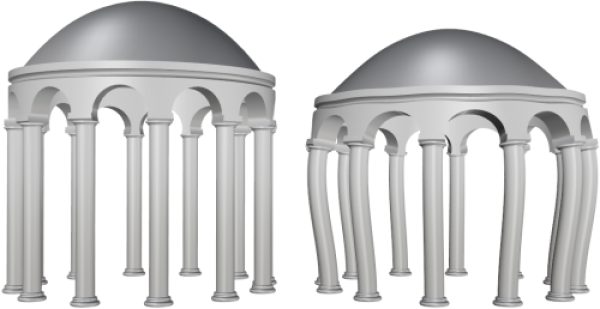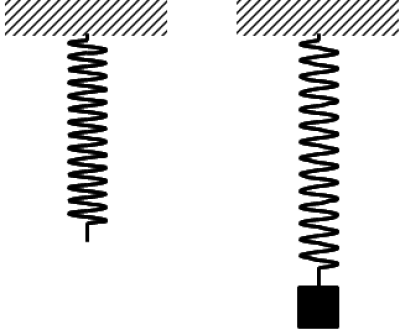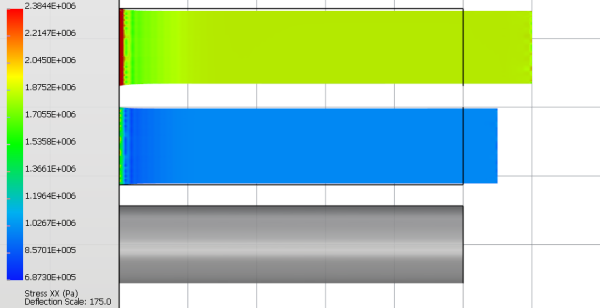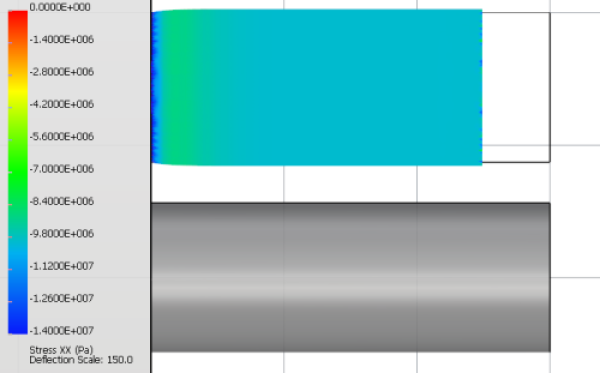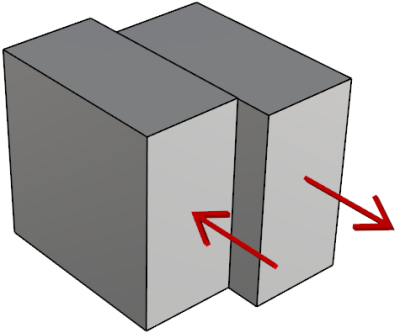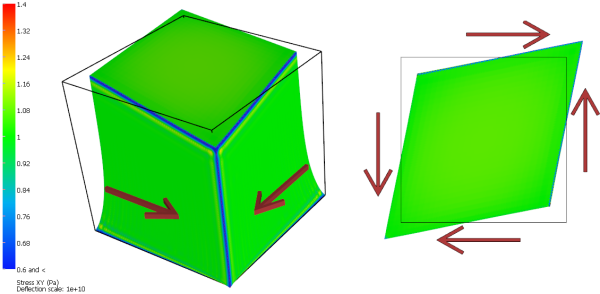Stress and Elasticity
Stress analysis is the core goal of Scan&Solve and begins with a simple observation: when a force is applied to a material, it will deform. In the following Scan&Solve simulation, a marble dome is shown deforming under the force of gravity (note the deformations are magnified extensively to make them visible).
Deformation is how a material is able to resist a force applied to it. Similarly, a spring resists a force by deforming. In the picture below, a spring is shown with and without a weight attached. The weight exerts a force on the spring, causing it to extend.
In some ways, materials behave as if they were many springs connected together. Objects can actually be analyzed this way. However, to accurately simulate material behavior, the spring concepts of force and deformation need to be generalized. In order to analyze the material behavior throughout an object, the concepts of stress and strain are used.
Stress describes how hard an object is being pulled on, while strain describes how much it has deformed. Stress is defined as a force acting over an area, and has units of newtons per square meter (also called a pascal, Pa) or pounds per square inch (psi). Strain is defined as the ratio between the deformation of an object and its initial length, and is dimensionless. Strain can be thought of as a percentage based measurement of an object’s deformation.
In the Scan&Solve simulation below, a beam is being pulled horizontally. The bottom beam is the original beam and is in the image for reference. The middle beam has a 1 MPa stress applied to its end and the top beam has a 2 MPa stress applied to its end. The color legend indicates the stress in each beam and shows that the stress in the top beam is double the stress in the middle beam.
Note that the top beam also has double the strain of the middle beam: it has extended a full square longer, while the middle beam has extended only half of a square. This means that when we double a stress on an object, the strains also double.
There are several important distinctions used when describing stress. A positive value of stress indicates that the object is in tension – it is being pulled apart. The beam example shown above is in tension. It is equivalent to say that objects in tension (positive stress) have positive strain. A negative value of stress (or strain) indicates an object is in compression, and is being ‘pushed’ together rather than pulled apart.
The Scan&Solve model above shows a beam in compression. The legend scale is now entirely negative values. The compressive stress on the end of the beam is causing its length to shrink. The beam can also be said to have negative strain, as it decreased in length. Tension and compression stresses are described as normal stress. In the beam cases above, the normal stress in question is in the X direction (Stress XX).
Another type of stress is shear stress. While normal stress describes how parts of an object are pushed or pulled together, shear stress can be imagined as causing parts of an object to slide across one another. In the following example, two blocks are sliding across each other. Thus, there is a shear stress present between them.
Shear strain is related to the angle of deformation of the object. The following image shows a cube under shear stress, which acts parallel to the cube faces as shown. The shear strain can be observed, as the cube appears as if it has been squished into a parallelogram. The colors show that a constant shear stress is present throughout the cube.
Shear strain is related to the angle of deformation of the object. The following image shows a cube under shear stress, which acts parallel to the cube faces as shown. The shear strain can be observed, as the cube appears as if it has been squished into a parallelogram. The colors show that a constant shear stress is present throughout the cube.
To see the original blog post, click here
For further reading on Stress, Deformation and Strain, and Elasticity, follow the hyperlinks.

